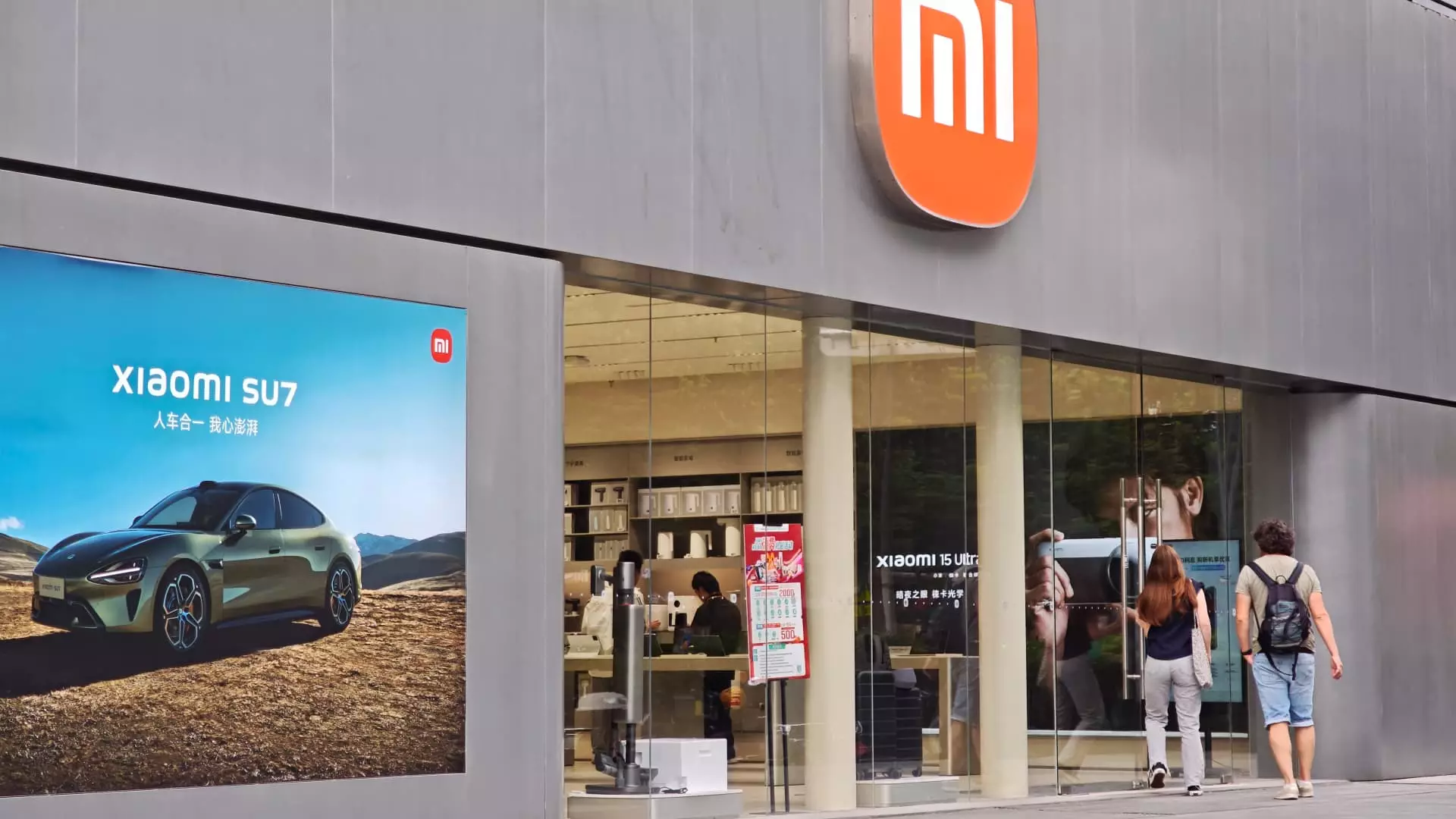In a riveting showcase of financial performance, Xiaomi, the burgeoning Chinese smartphone giant, recently announced its record net profit for the second consecutive quarter, a stunning feat in an incredibly competitive market. While it’s true that in raw numbers Xiaomi’s profits pale in comparison to Apple’s regardless of the success in its latest earnings release, the narrative evolving around Xiaomi presents it not merely as a competitor but as a potential disruptor. Xiaomi is capturing attention not just because of its impressive figures—recording an adjusted net income of 10.68 billion yuan ($1.48 billion)—but because of the broader implications of its success, especially in a market where established giants like Apple are starting to falter.
The market’s embrace of Xiaomi has been fierce, as evidenced by the company’s stock appreciation of more than 45%, rising to approximately 50.95 Hong Kong dollars ($6.50). This sharp ascent starkly contrasts with Apple’s plummeting stock, which has faltered by 20% this year alone. Analysts such as those from Jefferies have responded by increasing their price targets for Xiaomi, optimistic about the company’s continuing growth trajectory. Yet, one must question what this resilience truly means in the grander scheme of the technology landscape and how sustainable such growth is in an environment marked by economic uncertainty and suppressing government policies.
AI-Driven Appliances: A Double-Edged Sword?
In its latest earnings call, Xiaomi’s focus on its “AIoT” segment—comprising Artificial Intelligence of Things appliances—revealed both ambition and potential pitfalls. Xiaomi’s appliances incorporate smart technology, enabling users to control them remotely. While 22% of its revenue stems from these products, one has to wonder if leaning too heavily on a mature market could stymie innovation in a rapidly changing tech landscape.
The thrill of innovation is palpable with the announcement of its new Xring O1 chip, engineered to excel against Apple’s A18 Pro chip in certain benchmarks, especially in gaming performance. Yet, there’s a nagging concern that this competitive edge in high-end specifications may not be enough to stave off market volatility, especially if consumer preferences shift yet again. Chinese consumers, known for their price sensitivity, may not be willing to pay premium prices for incremental improvements as seen in the smartphone wars of yesteryears.
The Electric Vehicle Pivot: Boon or Bane?
While Xiaomi’s traditional revenue streams show promise, analysts believe the company’s future success is increasingly tied to its ambitious leap into the electric vehicle (EV) market. The unveiling of the YU7 SUV is a significant step forward. Analysts project this vehicle may outperform competitors like the Tesla Model Y in terms of driving range, and could provide a much-needed catalyst for the company as consumer demand for EVs continues to rise.
But is this reliance on a new, competitive landscape a gamble too steep? The ambitions surrounding YU7 are palpable, yet the automotive market is notoriously challenging, wrought with issues of supply chain, regulation, and consumer sentiment volatility. Analysts from Morgan Stanley have voiced that the YU7 launch could elevate Xiaomi’s pricing strategy, yet there’s an equal chance that such expectations could lead to disappointment if the vehicle does not achieve anticipated sales volumes.
As evidenced by the mixed reactions from financial institutions, including JPMorgan’s more reserved stance, there’s recognition that Xiaomi’s diverse ecosystem still faces significant hurdles, especially when it comes to generating consistent revenue from services, as Apple has done successfully.
The Long Game: Strategic Miscalculations Ahead?
Despite the suits proclaiming Xiaomi a winner in the EV market, there’s a resounding concern about the sustainability of its growth strategy. Xiaomi’s ambitious expansion into the EV sector could distract from refining and enhancing its core smartphone offerings. Compounding this issue is the reality of China’s rapidly shifting market conditions, where regulatory pressures and economic challenges can swiftly change the game.
Furthermore, while Xiaomi’s decision to diversify its offerings seems intuitive, there’s a danger in spreading resources too thinly. Investors and analysts who hail the company’s upward trajectory must remain cognizant of the economic headwinds and global tech landscape volatility that could derail its soaring stock performance.
In a technology environment that rewards agility and adaptability, Xiaomi certainly has the potential to steer itself towards dominance. However, the road ahead does not appear free of obstacles, with recent trends reflecting a cautious optimism among analysts and investors alike. The real test will not merely be in maintaining existing momentum but in delivering consistent innovation that resonates with consumers’ increasingly complex demands.

